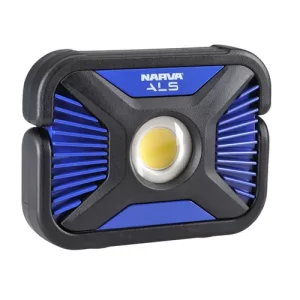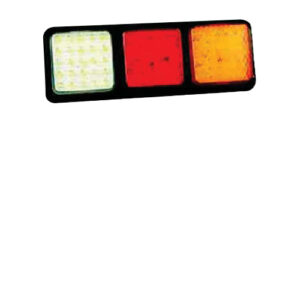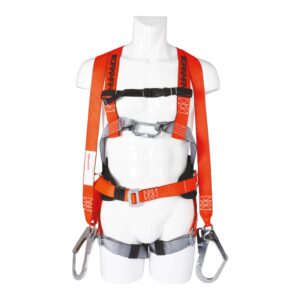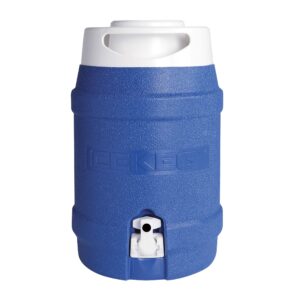FIRE EXTINGUISHER SAFETY SEALS
- Brand: FIRE SOLUTION TECHNOLOGY
FIRE EXTINGUISHER SAFETY SEALS seals are crucial components designed to ensure the integrity and readiness of fire extinguishers in various settings. These seals serve multiple purposes, including indicating the readiness status of extinguishers, preventing tampering or misuse, and complying with safety regulations. Here’s an in-depth exploration of their components, functionality, types, and installation:
#### Components of Fire Extinguisher Safety Seals
1. **Seal Material**: Fire extinguisher seals are typically made from durable materials such as plastic, metal, or a combination thereof. These materials are chosen for their resilience against tampering and environmental conditions.
2. **Identification Markings**: Many seals include identification markings such as serial numbers, barcodes, or company logos. These markings help in tracking and verifying the authenticity of the seal and the extinguisher it secures.
3. **Tamper-Proof Features**: Seals are designed with tamper-evident mechanisms, such as self-locking mechanisms, adhesive closures, or breakable tabs. Once applied, any attempt to remove or tamper with the seal results in visible damage or alteration, indicating potential tampering.
4. **Color Coding**: Some seals use color coding to denote different statuses or inspection dates. For example, a green seal might indicate a recently inspected and approved extinguisher, while a red seal might indicate an extinguisher that requires inspection or maintenance.
5. **Adhesive or Attachment Method**: Seals can be adhesive-backed for easy application on fire extinguisher pins or handles. Alternatively, they may feature a wire loop or zip-tie mechanism for securing around the extinguisher’s safety pin or locking mechanism.
#### Functionality of Fire Extinguisher Safety Seals
Fire extinguisher safety seals serve several critical functions in maintaining fire safety and compliance:
1. **Readiness Verification**: Seals provide a visual indicator of whether an extinguisher has been inspected, maintained, and deemed operational. This helps in quickly assessing the readiness status of extinguishers during routine inspections or emergency situations.
2. **Tamper Prevention**: By sealing the safety pin or locking mechanism of fire extinguishers, these seals deter unauthorized access, tampering, or misuse. This is crucial in preventing accidental discharge or vandalism that could compromise fire safety.
3. **Regulatory Compliance**: Fire safety regulations often mandate the use of safety seals as part of routine inspection and maintenance protocols. Compliance ensures that extinguishers are regularly checked, serviced, and ready for use in case of fire emergencies.
4. **Asset Management**: Seals with identification markings aid in asset management by providing traceability and accountability. Inspection records can be cross-referenced with seal markings to track maintenance history and compliance with regulatory standards.
5. **Visual Inspection**: During routine inspections, firefighters, safety inspectors, or facility managers can visually inspect the seals for signs of tampering or damage. This ensures that extinguishers remain secure and operational between formal inspections.
#### Types of Fire Extinguisher Safety Seals
Fire extinguisher safety seals come in various types and configurations to suit different applications and regulatory requirements:
1. **Plastic Seals**: Made from durable plastic, these seals are lightweight, tamper-evident, and often feature a self-locking mechanism or breakable tabs for quick application and removal.
2. **Metal Seals**: Metal seals offer enhanced durability and security, suitable for environments where stronger tamper resistance is required. They may feature engraved serial numbers or embossed markings for identification.
3. **Adhesive-backed Seals**: These seals use strong adhesive backing to adhere directly to the safety pin or handle of the fire extinguisher. They are easy to apply and provide a secure seal against tampering.
4. **Wire Loop Seals**: Utilizing a wire loop mechanism, these seals secure around the safety pin or locking mechanism of the extinguisher. They require tools (e.g., pliers) to apply and remove, providing a higher level of tamper resistance.
5. **Color-coded Seals**: Seals are available in different colors to signify various statuses or inspection dates. This aids in visual identification and helps distinguish between extinguishers that are ready for use and those requiring maintenance.
#### Installation of Fire Extinguisher Safety Seals
Proper installation of fire extinguisher safety seals ensures their effectiveness in safeguarding extinguishers and maintaining compliance with fire safety regulations:
1. **Preparation**: Ensure the fire extinguisher has been inspected, serviced, and deemed operational before applying the seal. Verify that all components, including the safety pin or locking mechanism, are in place and functioning correctly.
2. **Application**: Clean the surface area around the safety pin or handle where the seal will be applied to ensure adhesion. For adhesive-backed seals, peel off the backing and firmly press the seal onto the designated area. For wire loop seals, insert the wire through the designated holes and secure tightly.
3. **Verification**: Once applied, visually inspect the seal to confirm proper attachment and functionality. Ensure that the seal is intact and undamaged, with no signs of tampering or alteration.
4. **Documentation**: Record the application of the seal along with the extinguisher’s inspection date, maintenance history, and any relevant information. Maintain accurate records to demonstrate compliance with regulatory requirements.
5. **Replacement and Removal**: When a fire extinguisher undergoes maintenance or inspection, remove the existing seal carefully to avoid damaging the extinguisher or the seal itself. Replace with a new seal after confirming the extinguisher’s readiness for use.
### Importance of Fire Extinguisher Safety Seals
Fire extinguisher safety seals play a crucial role in enhancing fire safety protocols, regulatory compliance, and emergency preparedness across various sectors:
1. **Ensuring Operational Readiness**: Seals provide a visible indicator that fire extinguishers have been inspected, maintained, and are ready for immediate use in case of fire emergencies. This ensures that critical firefighting equipment is operational and reliable.
2. **Preventing Tampering and Misuse**: By sealing the safety pins or locking mechanisms of fire extinguishers, these seals deter unauthorized access, tampering, or accidental discharge. This helps maintain the integrity of fire safety equipment and reduces the risk of equipment malfunction.
3. **Compliance with Fire Safety Regulations**: Many fire safety codes and regulations mandate the use of safety seals as part of routine inspection and maintenance procedures. Compliance ensures that organizations adhere to legal requirements and industry standards for fire protection and safety.
4. **Enhancing Accountability and Transparency**: Seals with identification markings facilitate asset management by providing traceability and accountability. Inspection records can be cross-referenced with seal markings to track maintenance history, schedule inspections, and verify compliance with regulatory standards.
5. **Supporting Emergency Response Preparedness**: During fire emergencies, firefighters and emergency responders rely on the visual cues provided by seals to quickly identify operational fire extinguishers. This aids in prompt response and effective deployment of firefighting resources to mitigate fire risks and protect lives and property.
### Advantages of Fire Extinguisher Safety Seals
Fire extinguisher safety seals offer numerous advantages that contribute to their effectiveness, reliability, and suitability for fire safety applications:
1. **Tamper-Evident Design**: Seals feature tamper-proof mechanisms that provide visible evidence of any attempted tampering or unauthorized access. This ensures the integrity of fire extinguishers and promotes trust in their operational readiness.
2. **Easy Identification**: Color-coded seals or unique identification markings help distinguish between extinguishers that are ready for use, require inspection, or need maintenance. This facilitates efficient management and scheduling of inspection activities.
3. **Enhanced Security**: By securing the safety pins or locking mechanisms of fire extinguishers, seals prevent accidental discharge, misuse, or vandalism. This safeguards fire safety equipment and reduces the risk of operational disruptions during emergencies.
4. **Durability and Longevity**: Constructed from durable materials such as plastic or metal, seals withstand environmental conditions, frequent handling, and mechanical stresses. They maintain their integrity and functionality throughout the operational lifespan of fire extinguishers.
5. **Compliance with Standards**: Seals comply with national and international fire safety standards and regulations, ensuring consistency in design, performance, and reliability. They contribute to overall safety and risk management practices in residential, commercial, and industrial settings.
6. **User-Friendly Application**: Seals are designed for ease of application and removal during routine inspections or maintenance procedures. Adhesive-backed seals require minimal effort for attachment, while wire loop seals offer enhanced security and tamper resistance.
### Features of Fire Extinguisher Safety Seals
The features of fire extinguisher safety seals enhance their functionality, usability, and effectiveness in fire safety applications:
1. **Tamper-Proof Mechanisms**: Seals incorporate self-locking tabs, breakable features, or adhesive closures that indicate tampering upon removal. This ensures that any unauthorized access or interference is immediately identifiable.
2. **Identification Markings**: Seals may include serialized numbers, barcodes, or company logos for tracking purposes. These markings aid in asset management, inspection tracking, and regulatory compliance verification.
3. **Visual and Color Coding**: Seals are available in various colors to denote different statuses or inspection dates. This visual coding system facilitates quick identification of extinguishers that are ready for use or require maintenance.
4. **Material Durability**: Constructed from robust materials such as high-density polyethylene (HDPE) or stainless steel, seals withstand environmental exposure, UV radiation, and physical abrasion without compromising performance.
5. **Adhesive Adherence**: Adhesive-backed seals feature strong adhesion properties that bond securely to fire extinguisher surfaces, ensuring reliable attachment and resistance to peeling or detachment over time.
6. **Compatibility with Fire Extinguisher Types**: Seals are compatible with different types of fire extinguishers, including ABC dry chemical, CO2, water mist, and foam extinguishers. They accommodate varying handle designs, safety pin configurations, and operational requirements.
### Conclusion
Fire extinguisher safety seals are essential components of
Only logged in customers who have purchased this product may leave a review.
Please Login To Download Attachment
General Inquiries
There are no inquiries yet.









Reviews
There are no reviews yet.